Azaleas and rhododendrons are two of the most celebrated shrubs in the gardening world. With more similarities than differences, it’s easy to confuse the two. Learning their differences can help you select the best shrub for your landscape, allow you to care for their unique needs, and deepen your appreciation for the wide variety of these beautiful plants.
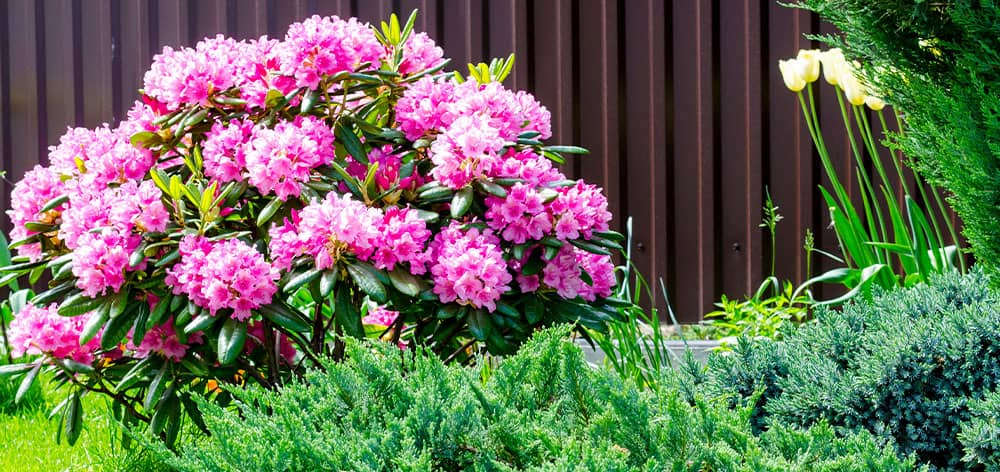 Botanical Origins
Botanical Origins
Both of these species come from the larger rhododendron genus, which explains their close similarities. In that sense, you can say that azaleas are a type of rhododendron. Look at the botanical name of azaleas, and you’ll even find the genus rhododendron. But when common gardeners refer to “rhododendrons,” they’re not talking about the whole genus but rather a specific species of shrub, which are also called rhododendrons, and are different from azaleas.
Azaleas vs. Rhododendrons: The Main Differences
Below are some details that can allow you to identify and distinguish these shrubs:
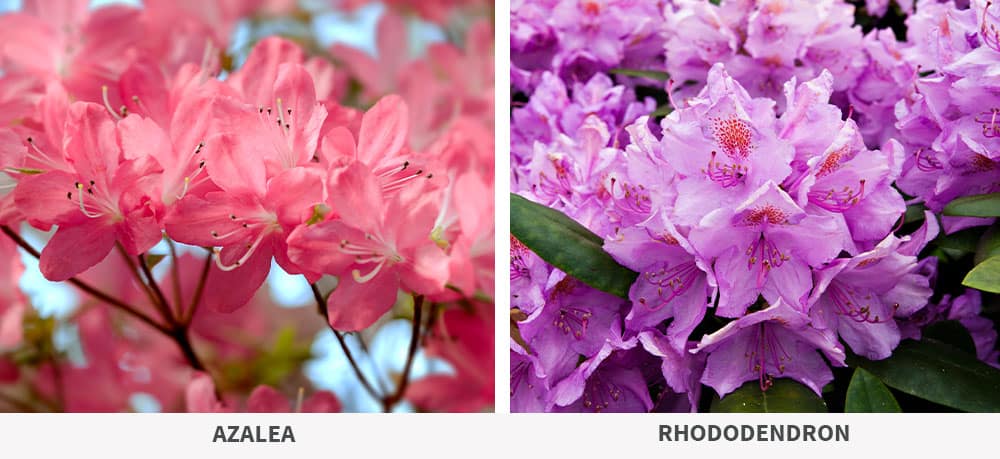
- Flower Shape: Rhododendrons usually have bell-shaped flowers, whereas azaleas have tubular or trumpet-shaped flowers.
- Number of Stamens: Rhododendron flowers have ten stamens, whereas azalea blossoms have five to six stamens.
- Flower Clusters: Rhododendrons feature clusters of flowers, whereas azalea flowers are each attached to single stems, but they appear as clusters because they’re close together.
- Flower Color: Generally, azaleas feature a wider variety of colors, ranging from white to red, orange, yellow, cream, purple, pink, and anything in between. By contrast, rhododendrons have a more classic palette of white, pink, purple, red, and sometimes yellow.
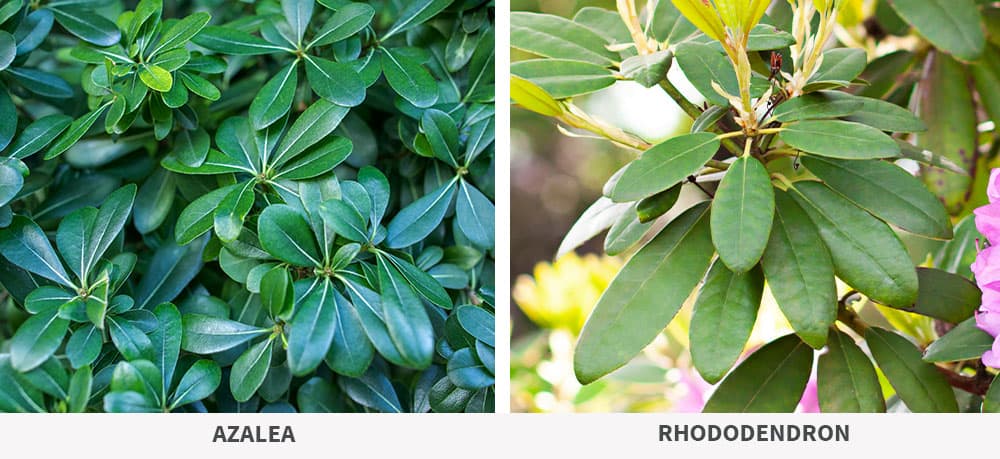
- Type of Leaves: Azaleas are usually deciduous but may be evergreen, depending on the climate. In contrast, rhododendrons are mostly evergreens.
- Leaf Shape: Azaleas usually have small, thin, oval-shaped, or pointed leaves, whereas rhododendrons have larger, thicker, leathery, paddle-shaped leaves.
- Blooming Time: Azaleas usually bloom in April, with some “repeat blooming” varieties having a second bloom time in the summer. Most rhododendrons bloom later in the spring, after azaleas.
Common Features of Azaleas and Rhododendrons
Despite their minor differences, both groups of shrubs dazzle your landscape in the spring with their profusion of colorful flowers. Both personalities exude elegance, grace, color—and lots of it! It’s rare for evergreen shrubs, like many rhododendrons (and some azaleas), to display such incredible blooms. The deciduous varieties are no less stunning.
 How to Grow Azaleas and Rhododendrons
How to Grow Azaleas and Rhododendrons
With their close heritage, both types of plants share many common growing preferences, including:
- Soil: Both azaleas and rhododendrons need acidic soil to flourish, with a pH of around 5 to 5.5. If your soil is too alkaline, you can lower the pH by adding special fertilizer for acidic-loving plants or mixing in sulfate.
- Light: Both types of shrubs grow in full sun or partial shade. Ideally, they’ll receive the soft rays of morning light and dappled shade or filtered sunlight in the afternoon.
- Moisture: Azaleas and rhododendrons thrive with evenly moist, well-draining soil. A layer of mulch helps keep the moisture in, especially for newly planted shrubs. Avoid planting in areas with poor drainage where they’ll get waterlogged.
 When to Plant Azaleas and Rhododendrons
When to Plant Azaleas and Rhododendrons
These plants are pretty flexible with planting, but we recommend planting before late autumn. Planting by mid-fall will ensure your plant has time to establish strong roots before winter and prepare to take on the chilly winter months. As long as they have time to settle in before the cold, you can plant these whenever suits you best!
Visit us at Stephens Landscaping Garden Center to see the differences between azaleas vs. rhododendrons for yourself! At the end of the day, both of these spring bloomers are cherished around the globe for their exuberant display of flowers, and you can enjoy them both right in your home landscape. Follow us on Facebook or Instagram for more!


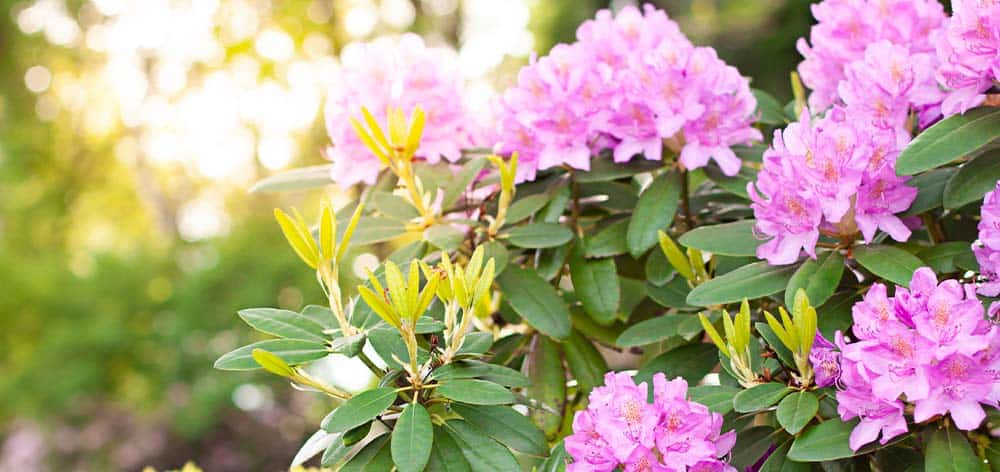 How to Grow Azaleas and Rhododendrons
How to Grow Azaleas and Rhododendrons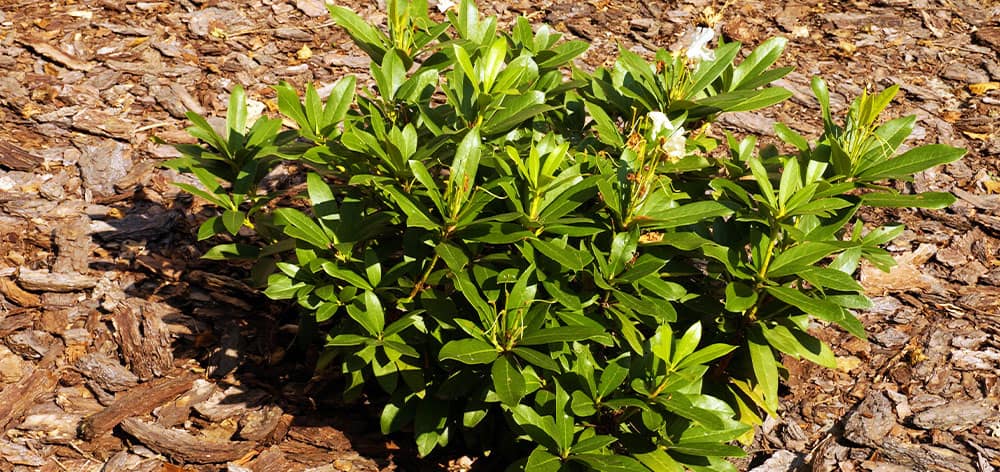 When to Plant Azaleas and Rhododendrons
When to Plant Azaleas and Rhododendrons